- Introduction
- Sevilla: Cool Before Dorne Was Cool
- Ceuta & Algeciras: Day Trip to Africa
- Cordoba: Capital of a Caliphate
- Granada: Memories of a K-Drama
- Malaga: Bonus Content Day
- Stuff We Ate
- Stuff We Drank
- Uncategorized Thoughts
Our knowledge of the Spanish cuisine was very limited, so this ain’t gonna be a foodie’s guide to eating in Andalucia. That said, we did enjoy lots of great food there. We even enjoyed paying for it, for things in Spain were far more affordable than anticipated. From time to time, our family would finish an entire meal and get a bill not much more than $10! That much wouldn’t even be enough for an appetizer in California.
Tapas
In the US, tapas seemed commonly understood as a type of Spanish cuisine. Maybe it was that, too, but this trip taught us to think about the word differently. Tapa, it turned out, merely referred to a portion size.
In many restaurants, food can be ordered in a “plato” size or a “tapa” size. The former may cost $8-10 and be served akin to an American entree, while the latter would cost $3-3.50 and come on a much smaller dish. We weren’t familiar with Spanish dishes, so it was difficult to commit to a large portion of an unfamiliar dish. Given the hot weather, our appetite was often suppressed, as well. The availability of tapas allowed us to sample a number of items on the menu without overeating or wasting food.
This was fantastic. In America, I can’t tell you how many times we just wanted a taste of something and ended up with 3,000 unnecessary calories on the table and a bill that was $25 too high. One of my biggest pet peeves had to be Taiwanese restaurants in the US, where traditionally snack-sized street food got packaged into American-style entrees. Some foods simply don’t taste good beyond the first few bites! Thus, even though I didn’t love everything we ate in Andalucia, I had tremendous appreciation for the offering of tapas.
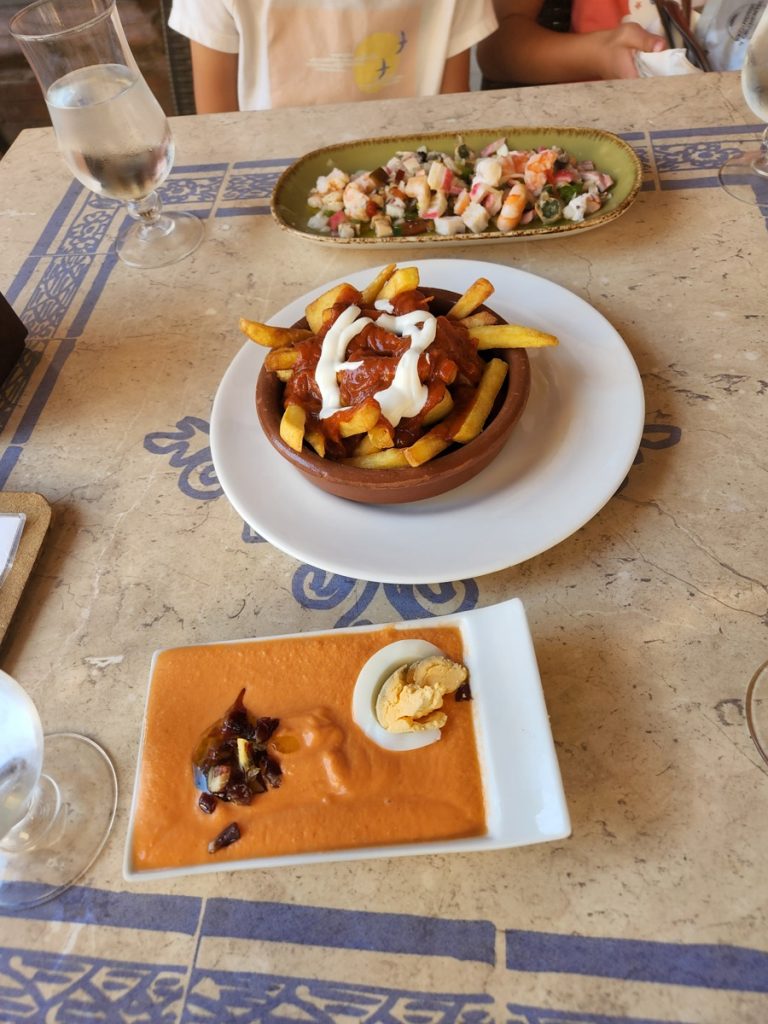
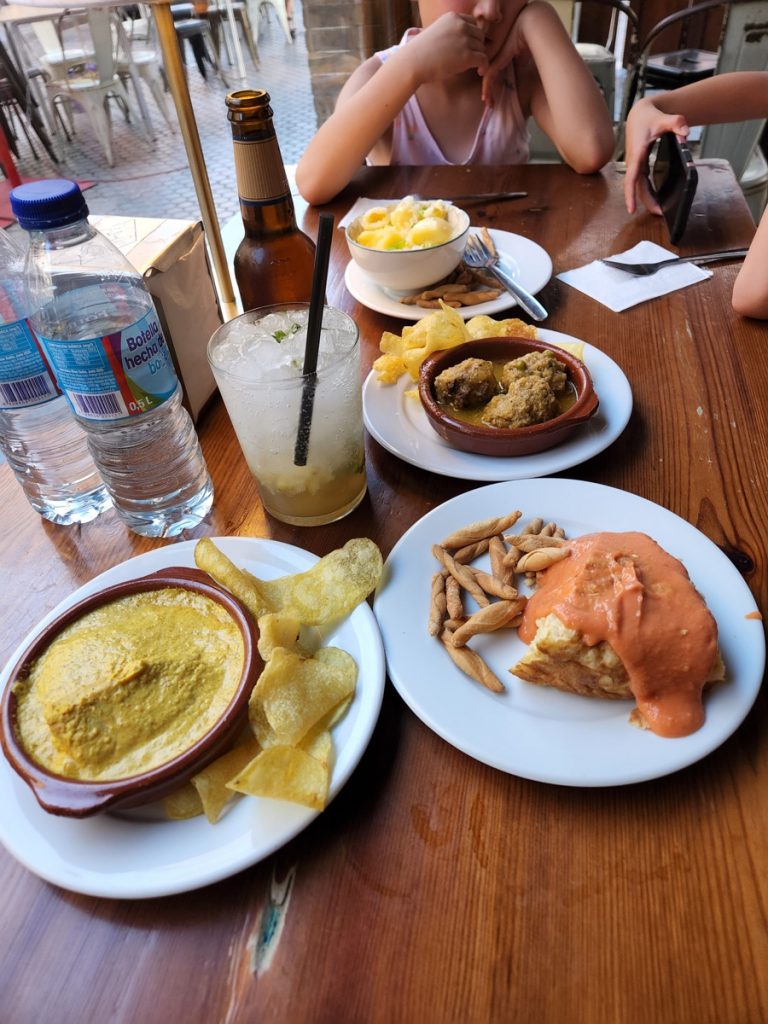
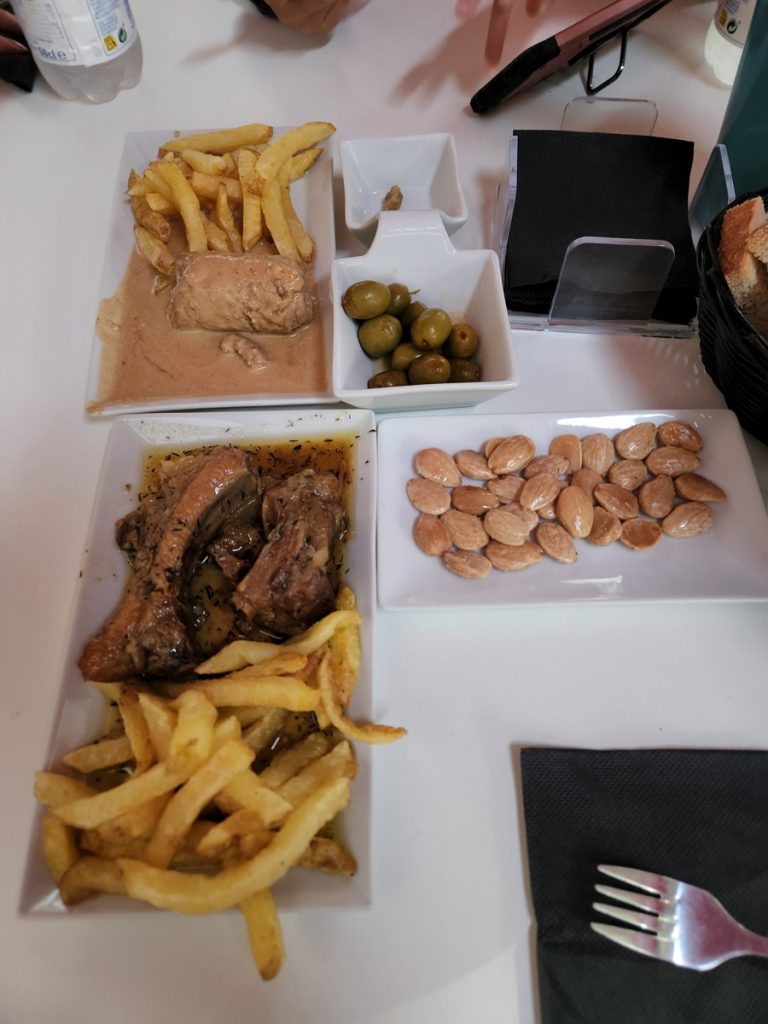
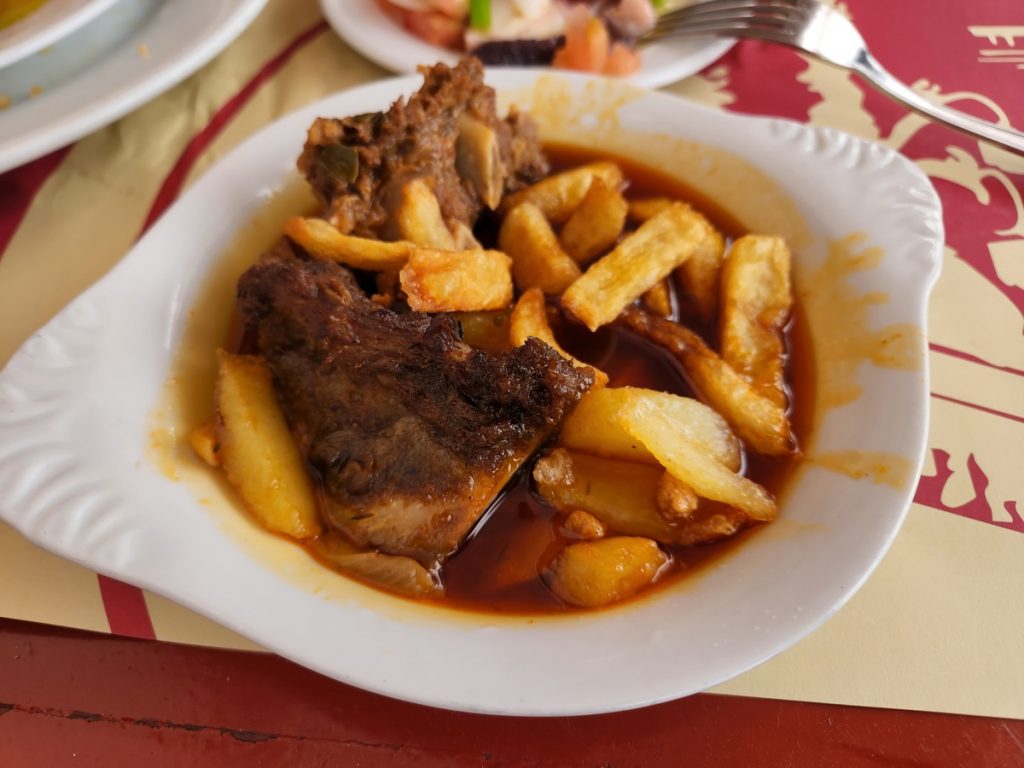
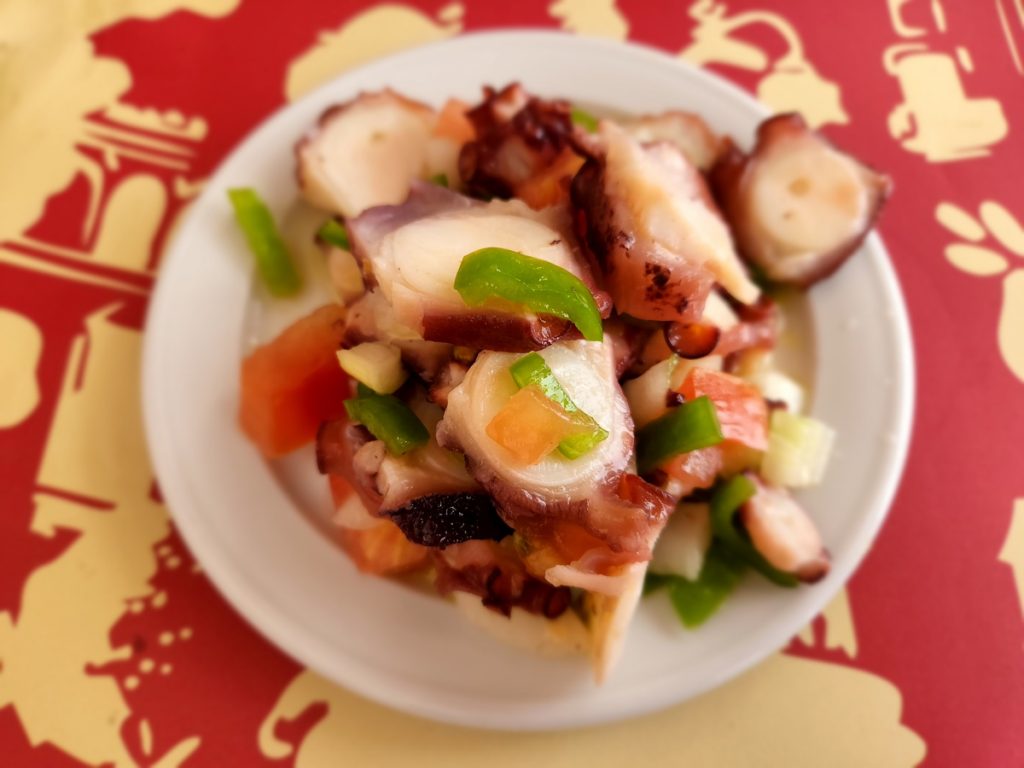
Jamon Iberico
Iberian ham was all the rage. Travel sites and foodie vlogs all pointed to this as the #1 must-eat thing when visiting Spain. While locals ate this stuff, too, it definitely was being hyped up for tourists.
We first “found” it in a Sevillan bar where we had our first breakfast. Seeing a whole pork leg being actively carved on the counter, and a few more hanging on the wall, felt like hitting the culinary jackpot. I enjoyed a “traditional Andalucian breakfast” of a ham sandwich, and wondered how likely we’d have a chance to try again. In the coming days, of course, we realized that the same sights and tastes would become repeatedly available literally everywhere we went. In the more touristy markets they even sold ham slices in little bouquets.
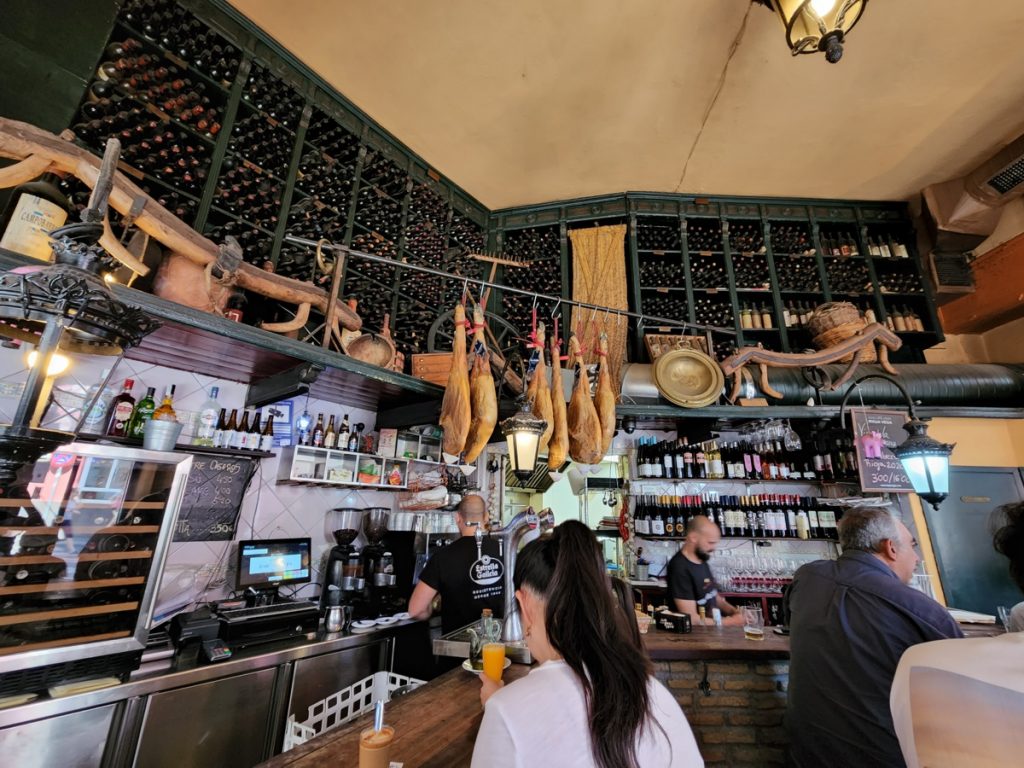
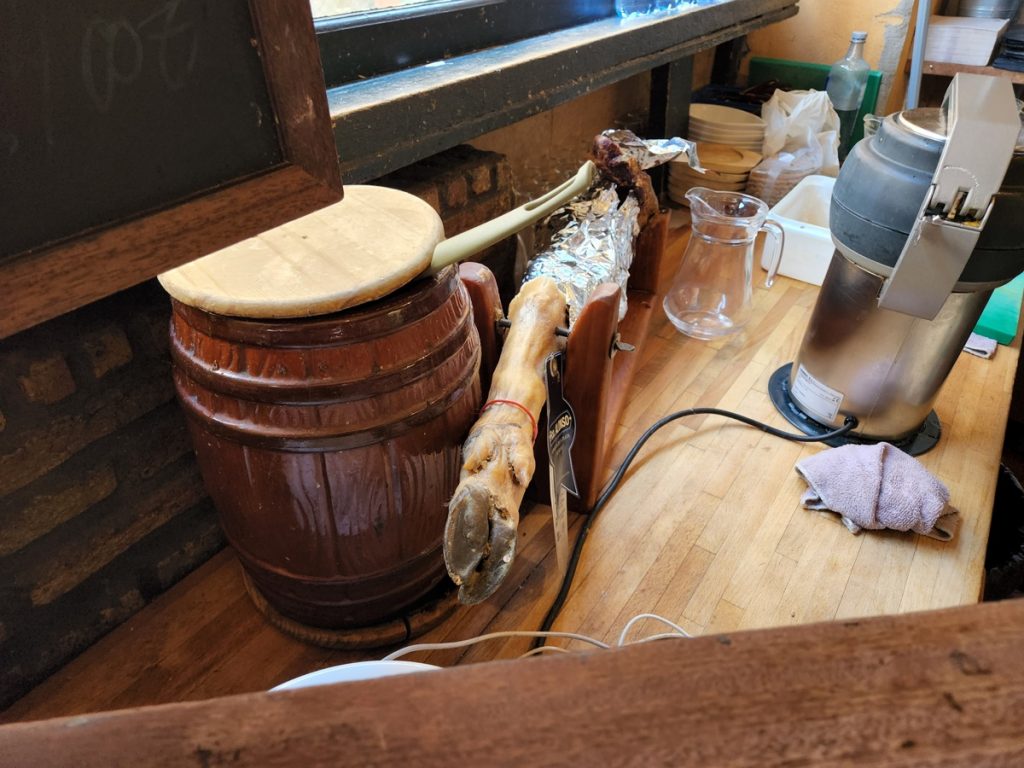

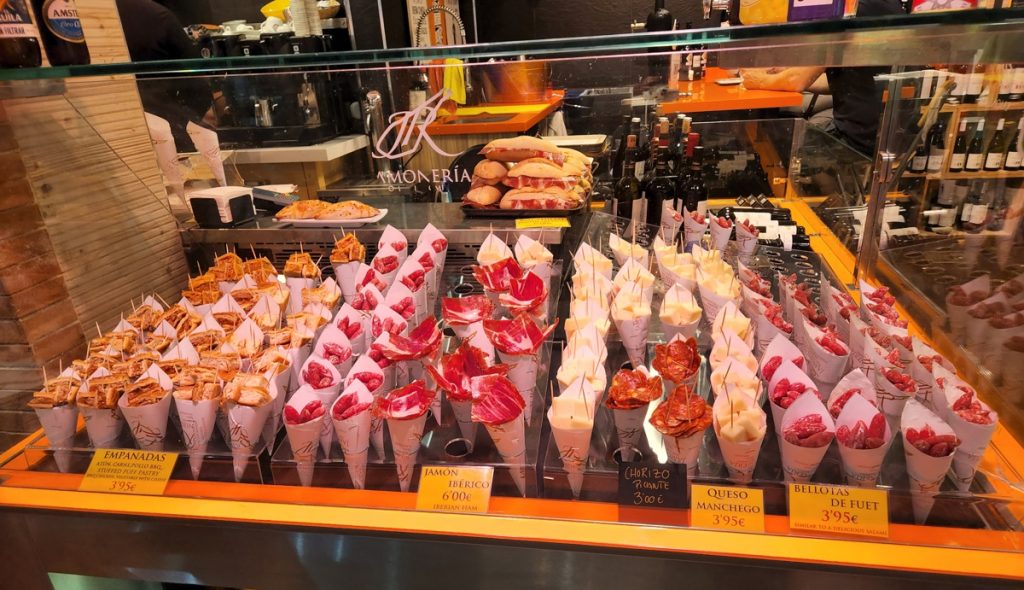
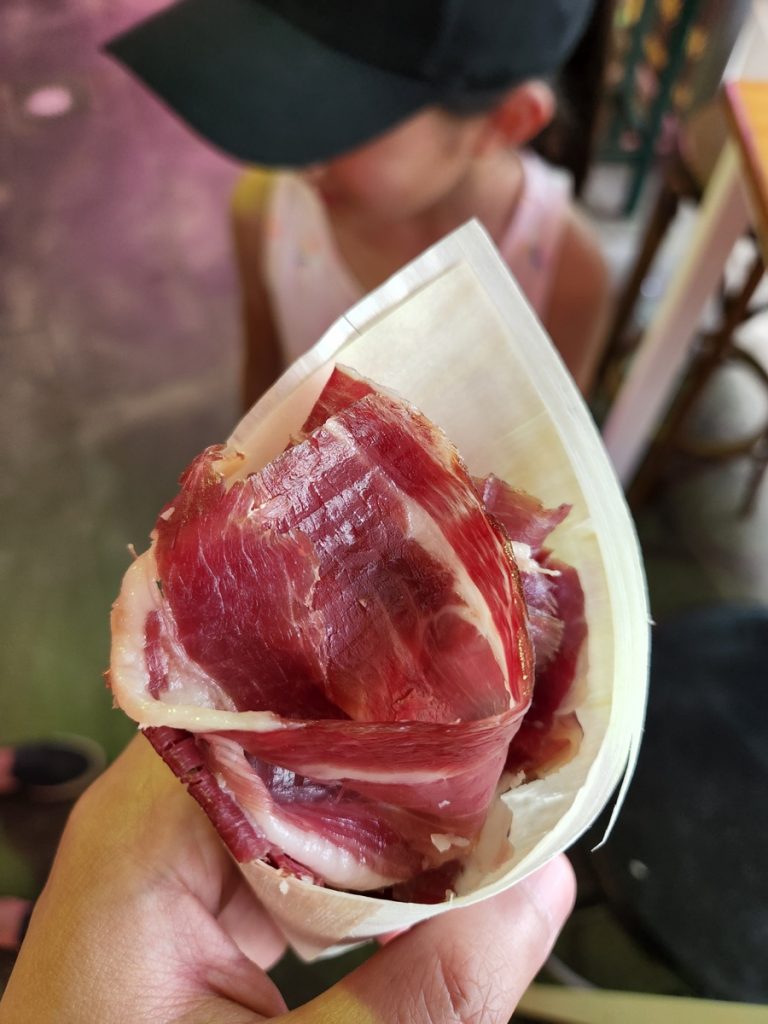
Churros
Hong had been hyping churros up with the kids for months leading up to the trip. Because I didn’t care for cinnamon sugar, I was never a big fan of those Disneyland churros. Trying the Spanish variety, though, my perception changed immediately and couldn’t get enough of it. The airy churro, by itself, tasted almost identical to the Chinese you tiao (油條). Do as the Spaniards do, we always dipped it in chocolate and ate it as a dessert-y breakfast.
Recommended: Cafeteria Dona Carmen in Sevilla because they offered both the “regular” puffy churros and the potato kind.
Caracoles
We came across an “hay caracoles” sign at dinner in Sevilla one day, and then several more times on this trip. Thus we knew it was a popular dish that happened to be in season. We didn’t know the word, but no matter, because every restaurant drew a cute picture on the sign. Snails. Without hesitation, I asked for an order and shared it with kids.
Can’t say snails were ever on my bucket list, but the intrigue had always been there. Growing up, I often heard in conversations “white people think we eat weird stuff but they eat disgusting snails!!” For $3.50, this restaurant gave us a bowl with ~75 little tree snails blanched in water and maybe a tad bit of salt. It was fun, or maybe disgusting depending on who you ask, to hold onto the shell, toothpick-stab the “foot” part of the flesh, and yank the rest of the body out. The taste was on the bland side and gave off what I could only describe as a snail smell. The texture was firmer than I expected of such a little thing, somewhere between chewy and soft. It was a great experience for all three of us, although none of us loved eating it. I struggled a bit with the last 2/3 of the bowl. To provide perspective, though, I also don’t love most kinds of shellfish and consider caracoles better than some.
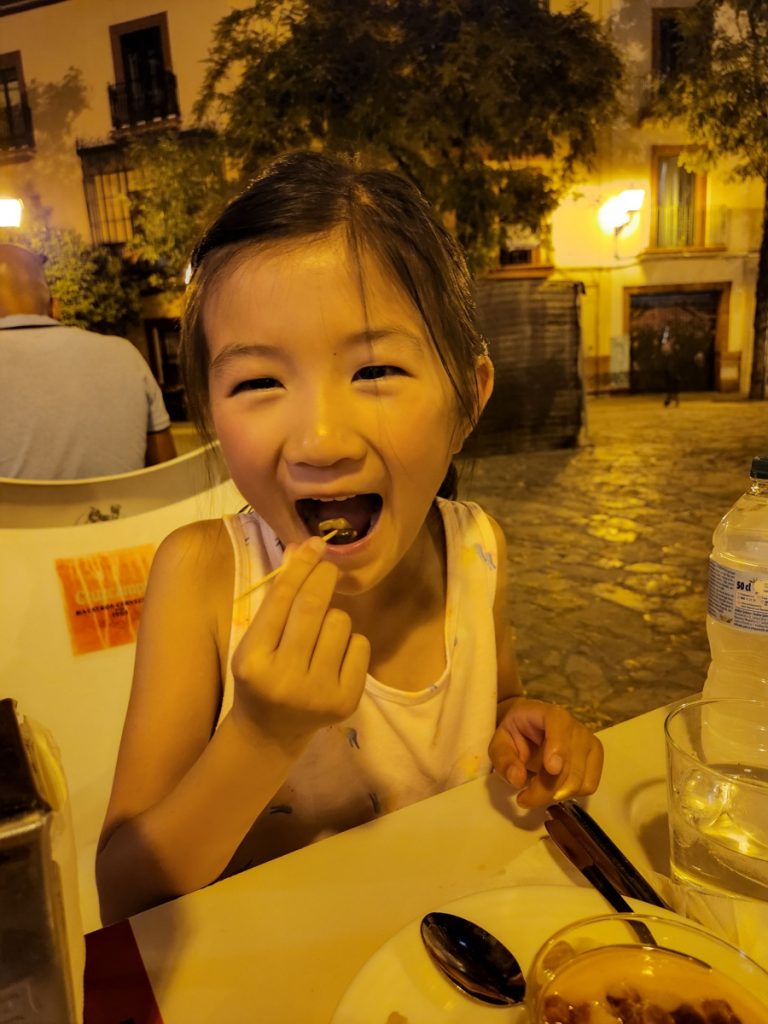

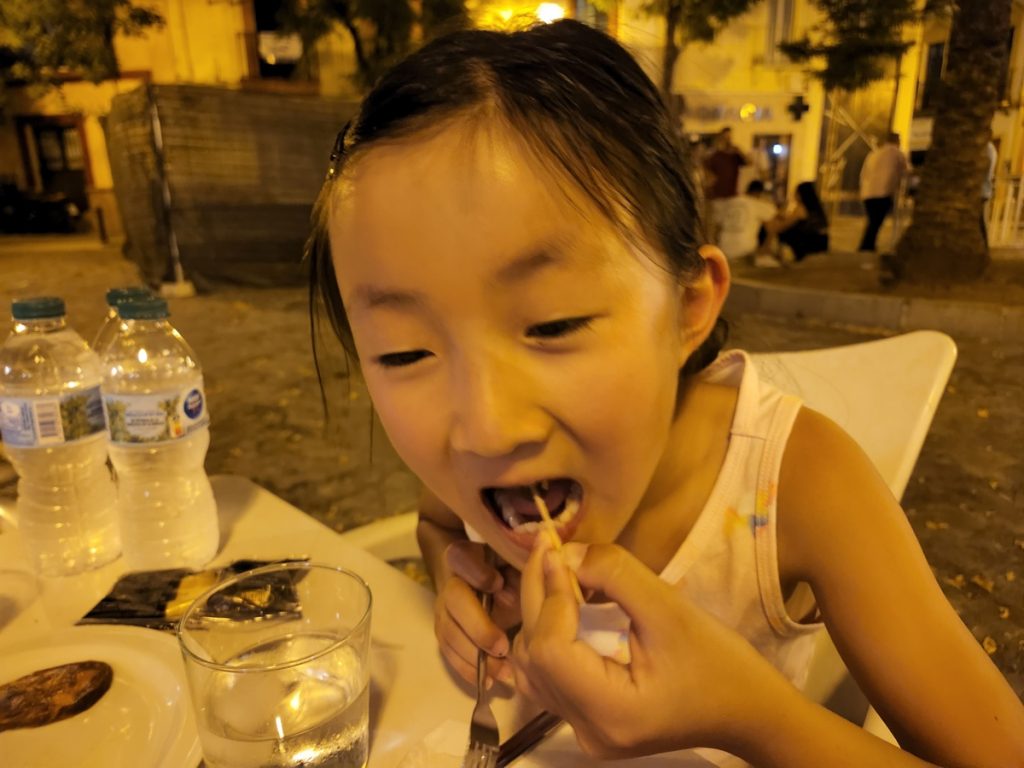
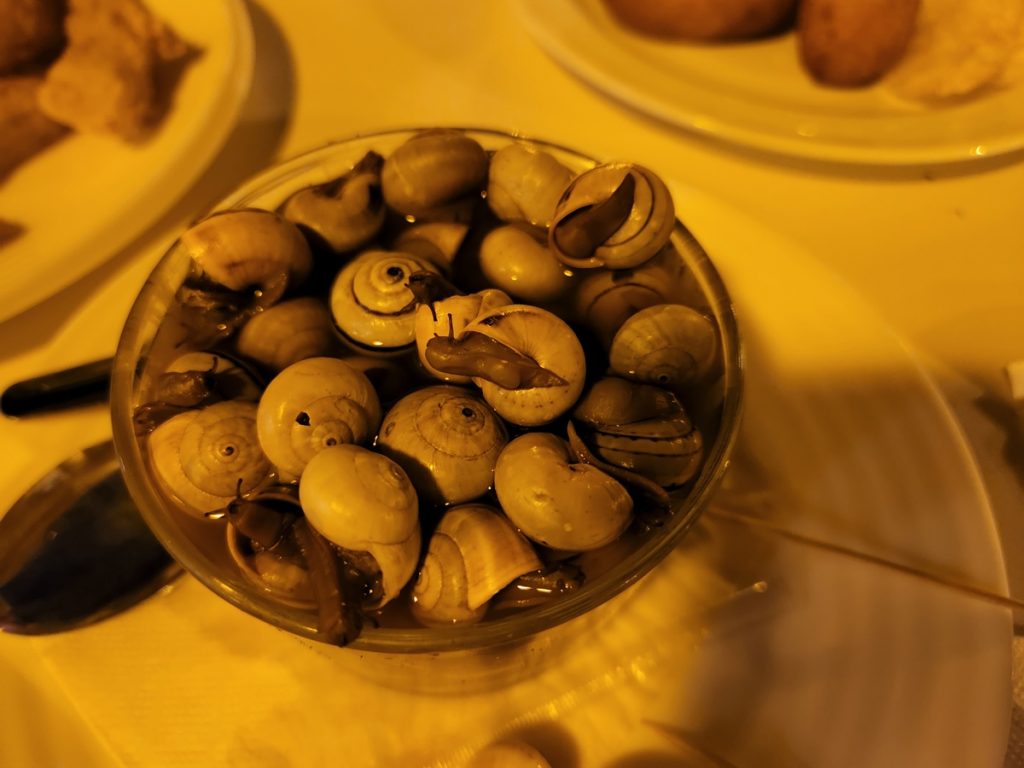
Middle Eastern & North African Restaurants
We weren’t terribly familiar with these cuisines, either, and can’t be sure if it’s “appropriate” to categorize Moroccan, Syrian, and Lebanese food together. Regardless, these Moorish dishes heavy on rice and lamb were some of the tastiest meals we had on this trip.
Recommended: Restaurante Damasco in Cordoba and Restaurant Fairuz in Granada
Other Spanish Foods
Among the non-tapa and non-Moorish meals we had, two particular dishes stood out as very memorable:
- Croquette with garlic & eggplant sauce at Meson Las Duelas in Algeciras – the hotel recommended this restaurant to us, and its expansive outdoor dining area had been completely full. We sat at the bar and had a wonderful time. Everything was excellent there, but my mouth really waters when thinking about the garlic & eggplant sauce that came on the plate with the croquettes. I licked that plate sparkling clean.
- Tuna tartare in ajoblanco (cold garlic & almond soup) at Casa Pepe de la Juderia in Cordoba – Dave recommended this restaurant to us. It was fully booked on our first night, but we were lucky to snatch a table during lunch the next day. Unfortunately we were under heat stroke and couldn’t focus on food very well. This dish though was amazing. I mean, tuna tartare was whatever, but we had never had anything like the ajoblanco soup it was soaking in. Give me a glass of that stuff and I’d drink it with a straw!
Fast Food
One way to compare cultures and cuisines is to try the same international chains in different countries. For that reason, of course, we had to sample McDonald’s and Burger Kind in Andalucia. At the former, I had a McRoyal Deluxe. It was crooked and didn’t seem too different from the average McBurger. BK was far more interesting with their Manchega and Iberia burgers. With both Manchega cheese and Iberian ham between the buns, Burger King was finally deserving of its title.


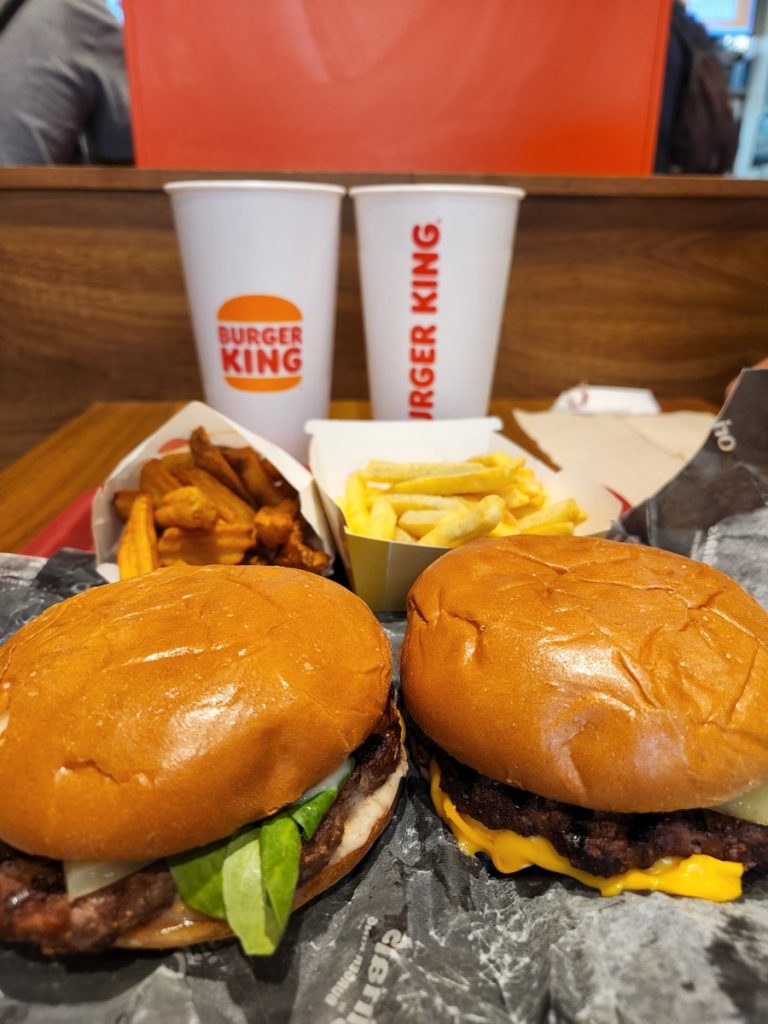
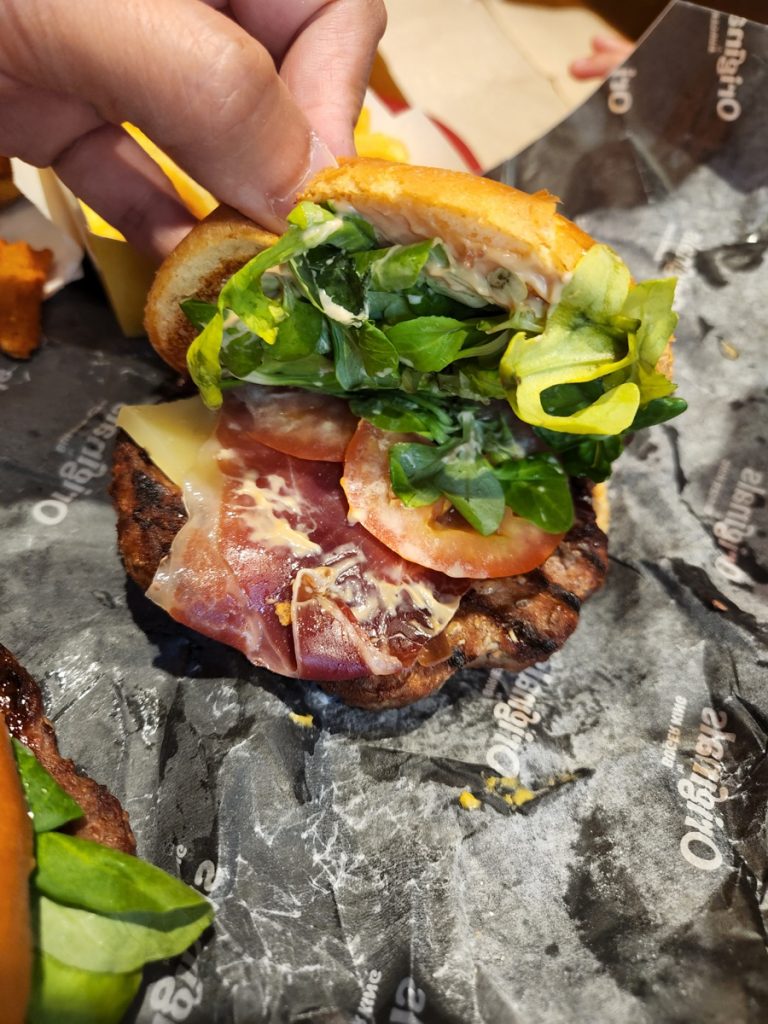
Ice Cream
My A1c had reached its historic level of 6.0 just before this trip, but it was also very hot in Andalucia… so what did we do? Ice cream every single day, of course! In two weeks I ate as much sugar from ice cream as I did from all desserts within the past year. It probably wasn’t wise, but it was delicious!
We made a point to visit a different ice cream store everyday and sampled a wide range of textures and flavors. Then we concluded that our favorite was La Abuela and made an exception to go back there a couple times (but in a different city).


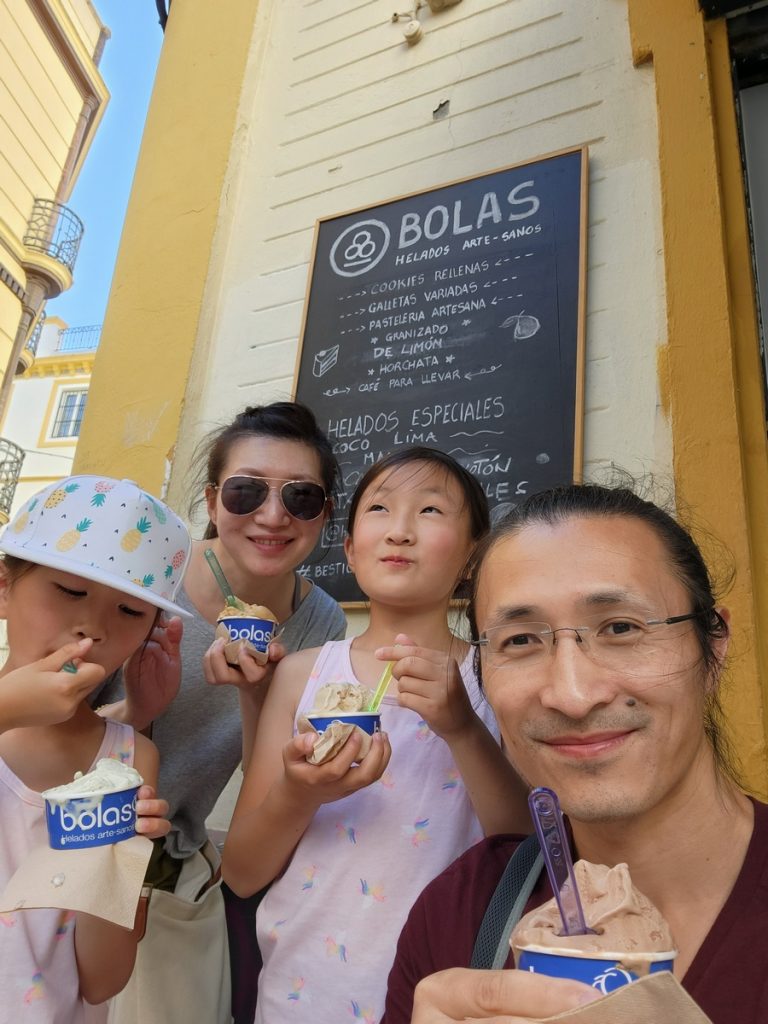
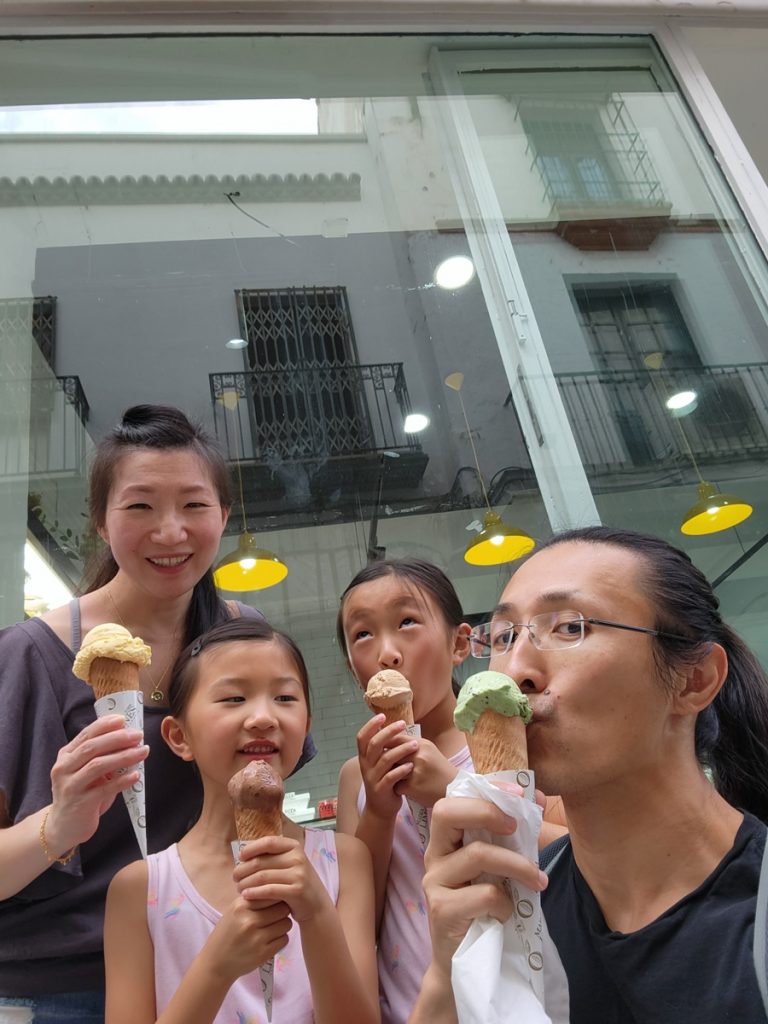







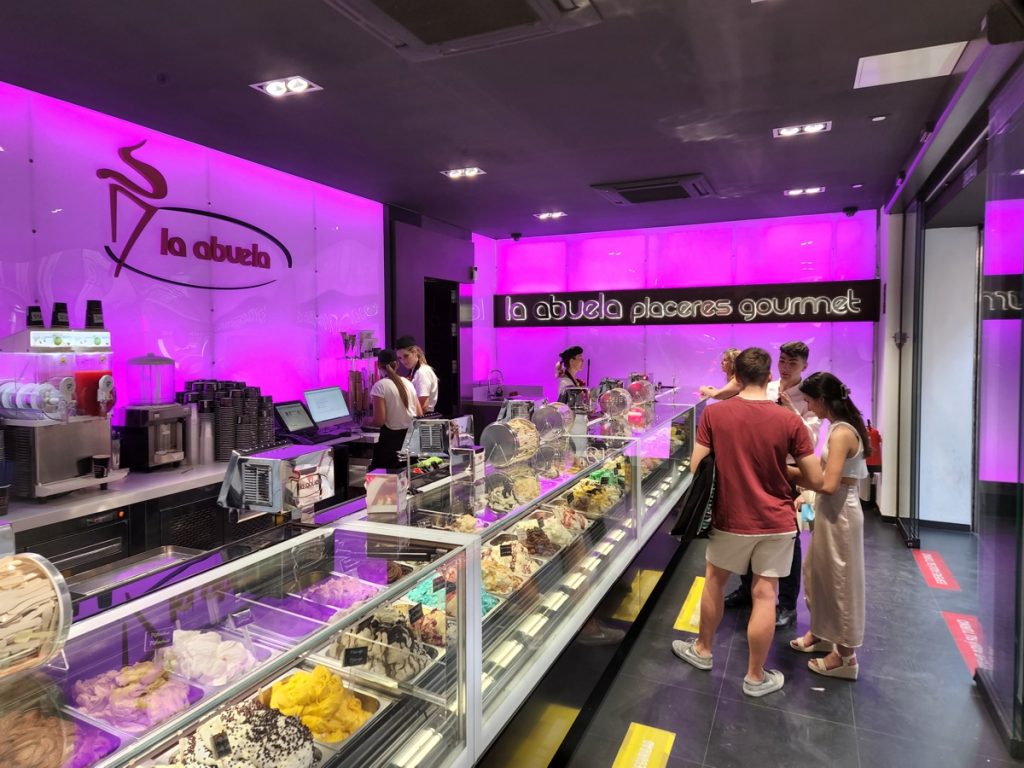
For the most part, eating ice cream abroad wasn’t a much different experience. We did come across a few notable flavors, though:
- Ferrero Rocher – my favorite candy of all times. So this was my first ice cream flavor in Andalucia as well. Delicious and rich in chocolate and hazelnut
- Smurfs –
disgustingintriguing light neon blue color named after those weird blue people. Ting was brave enough to try it, but did not give raving reviews - Happy Hippo – when I saw this flavor in a store, I thought it was cute and humorous. What does a hippo taste like? How about a happy one? I was so intrigued and had to ask. However, with limited vocabulary, all the lady could tell us was that it was sweet. Yay for information? I didn’t want to risk buying a suspiciously sounding ice cream flavor, but a few days later we learned in a Carrefour Express that Happy Hippo was a candy… so we bought seven boxes to bring home
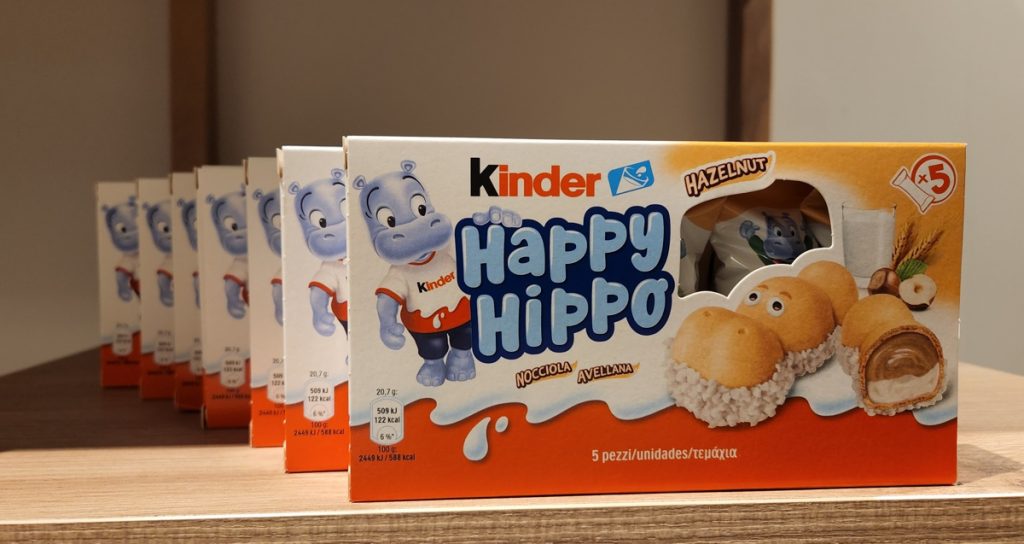
Random
Beyond meals, we also ate a lot of chips while hibernating from the sun in the hotel.

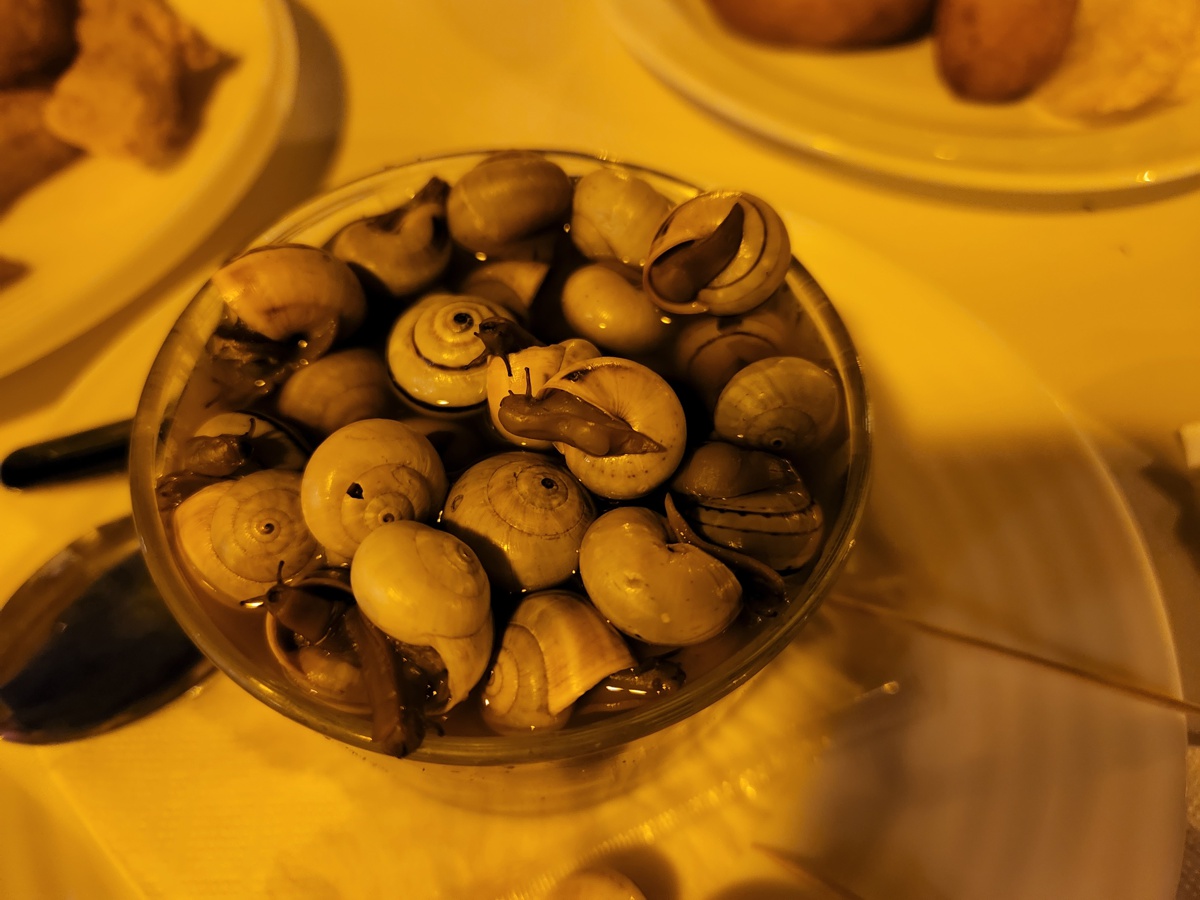
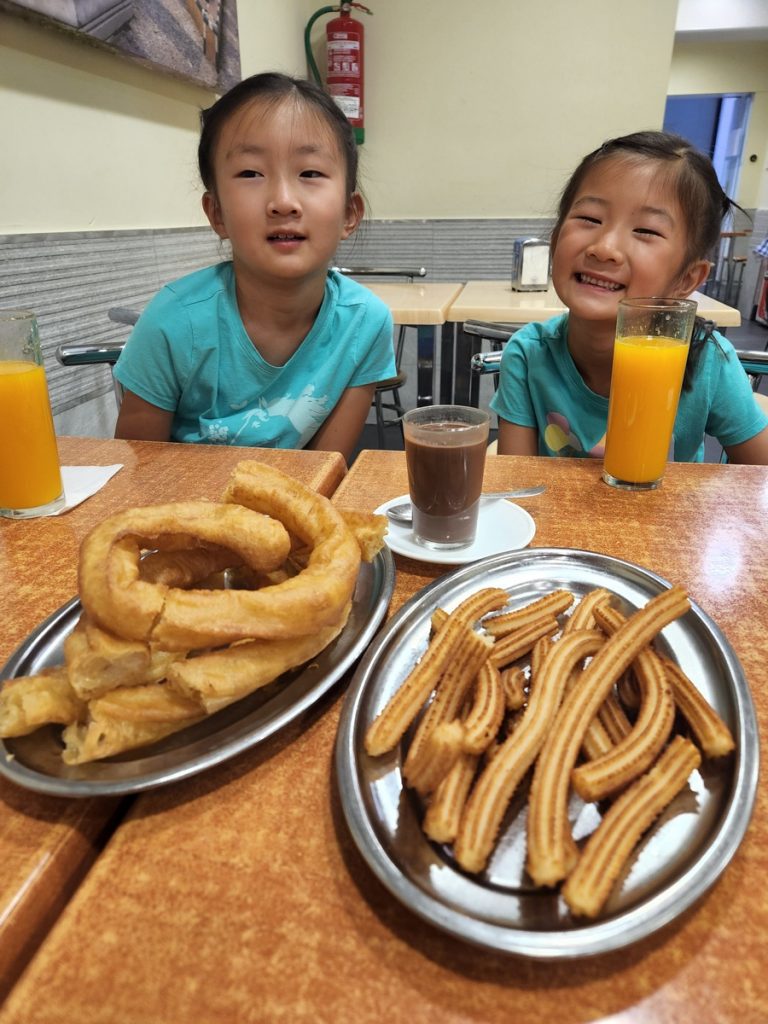
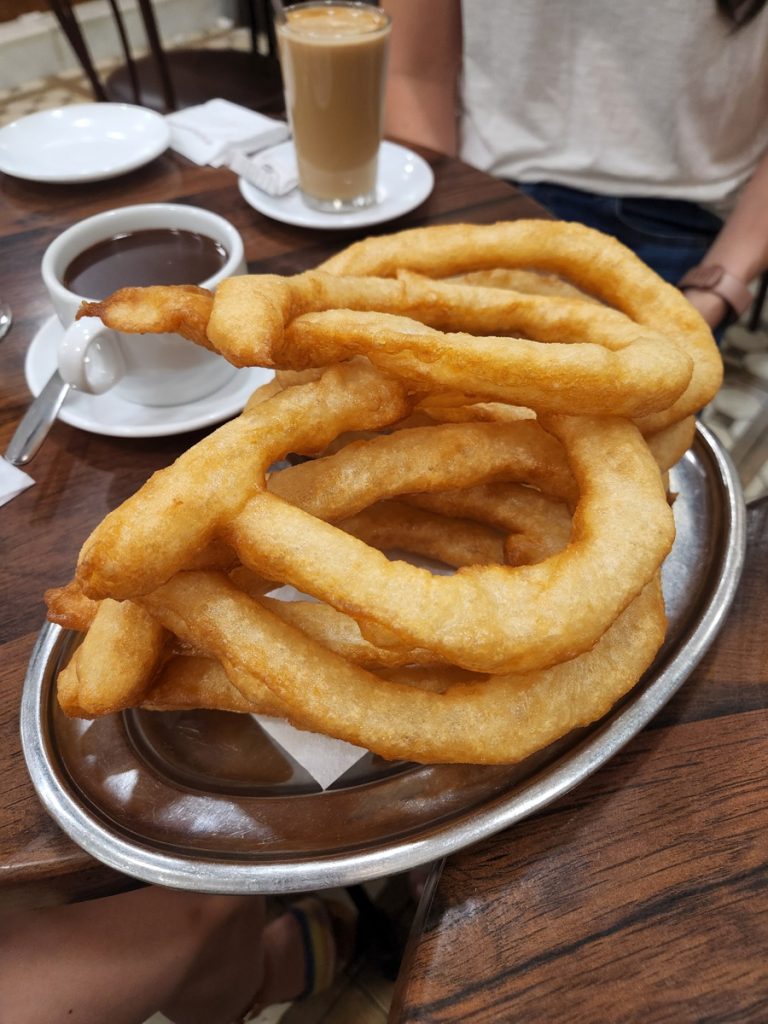

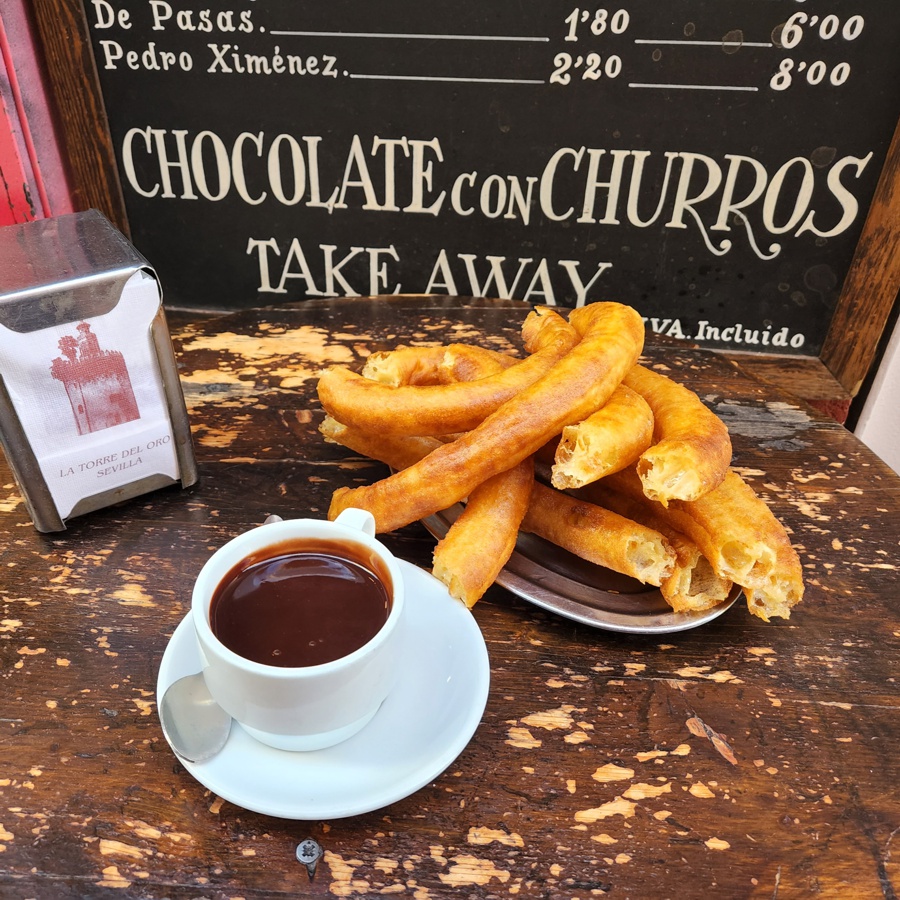

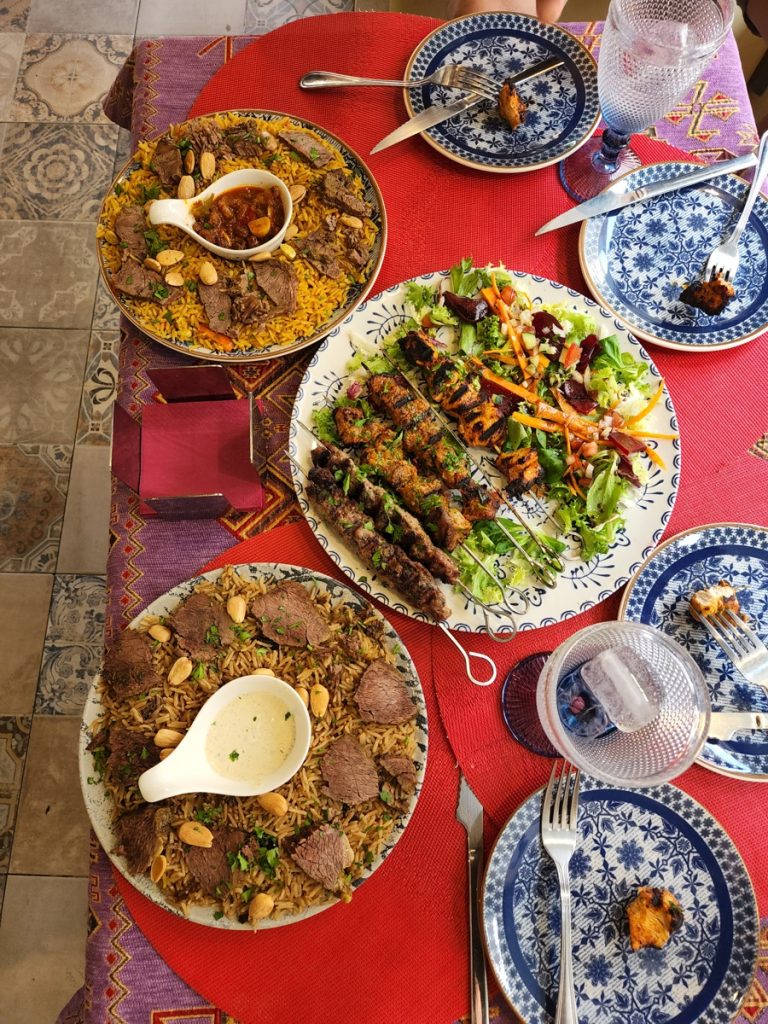
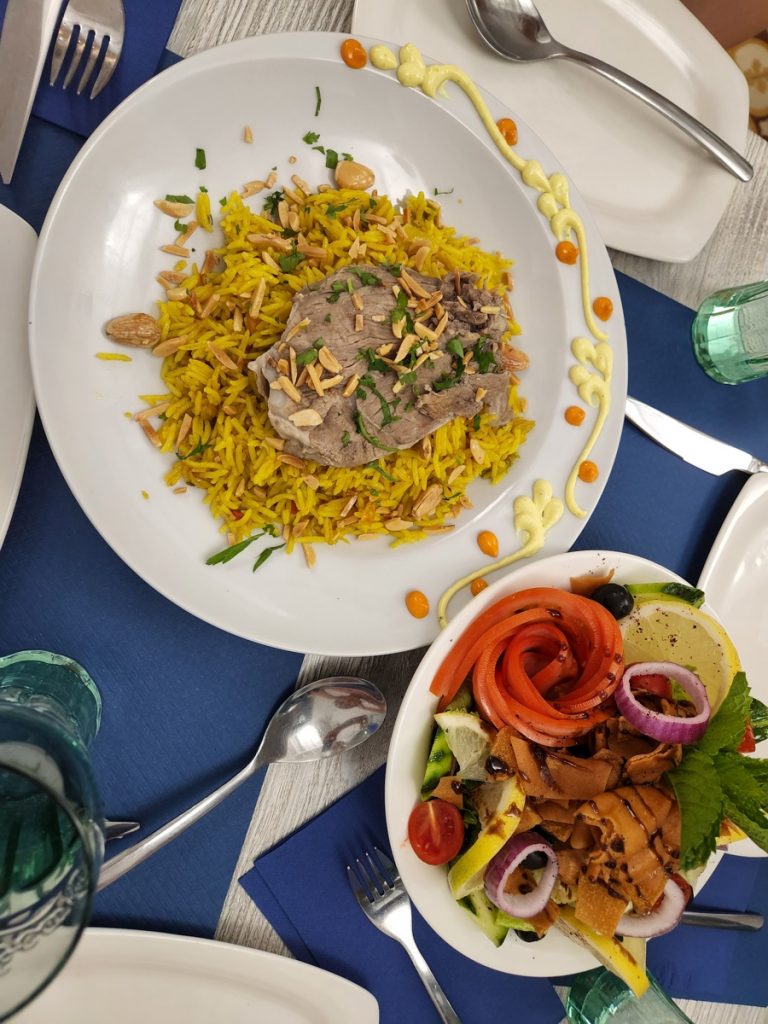
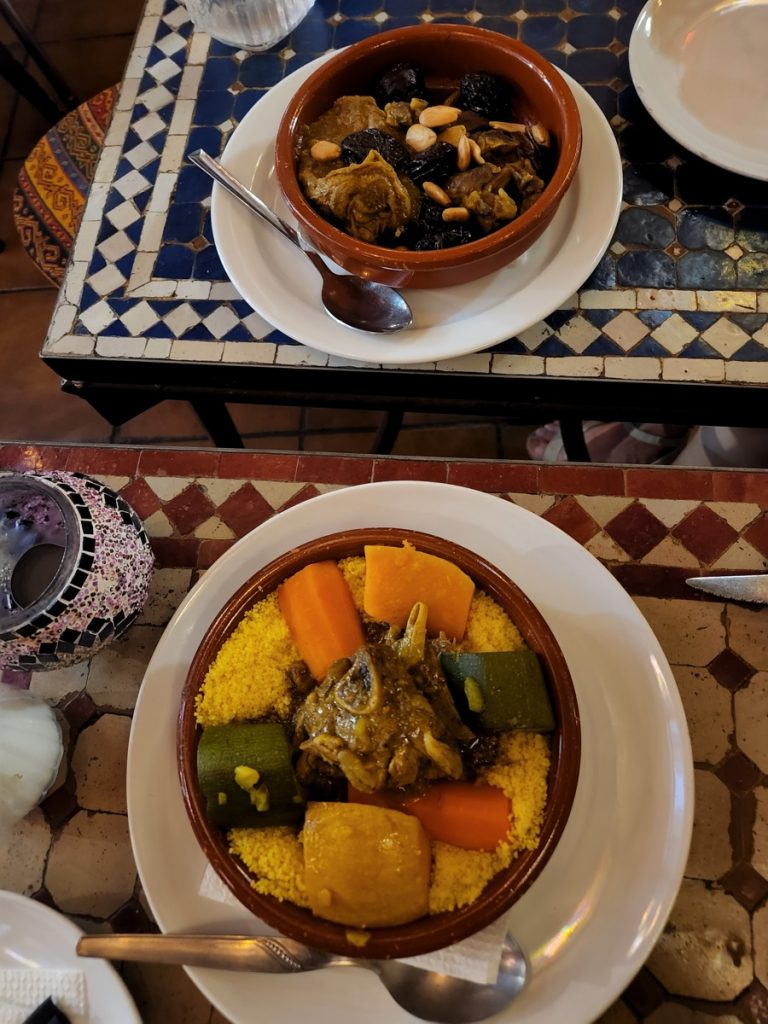
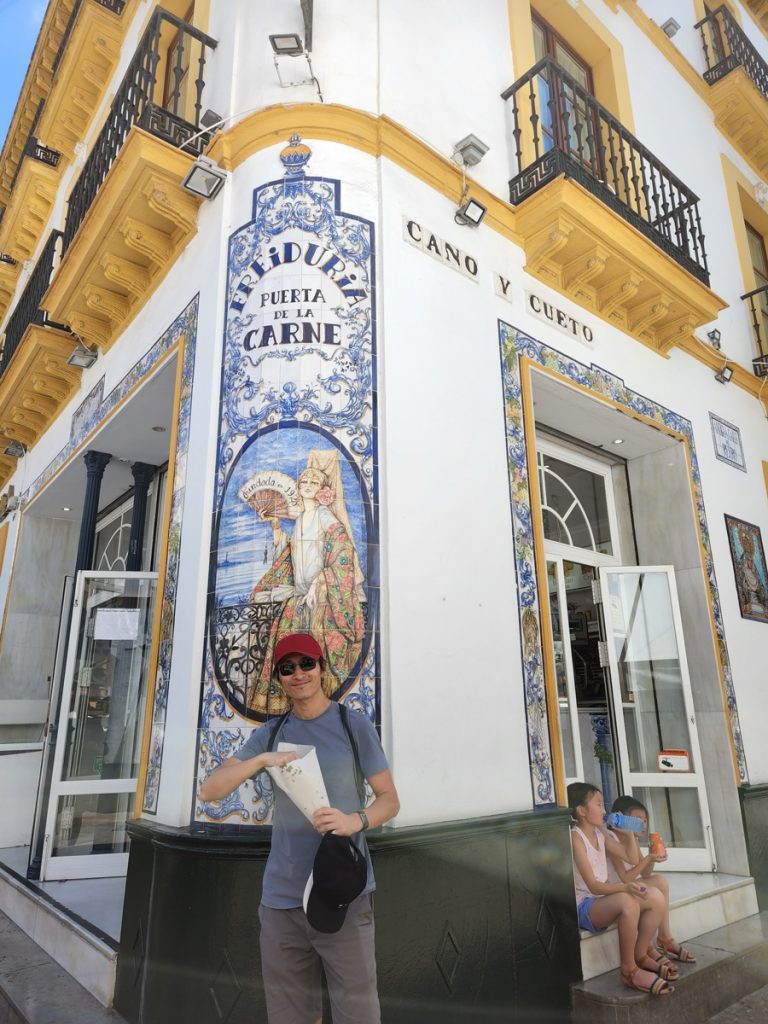
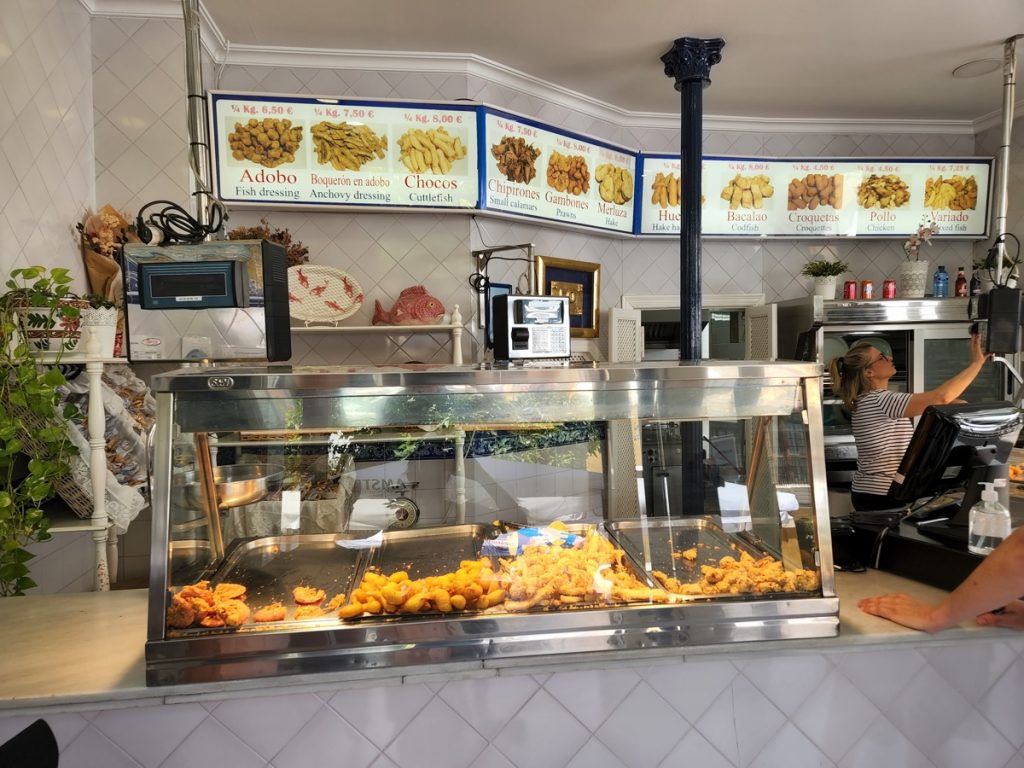
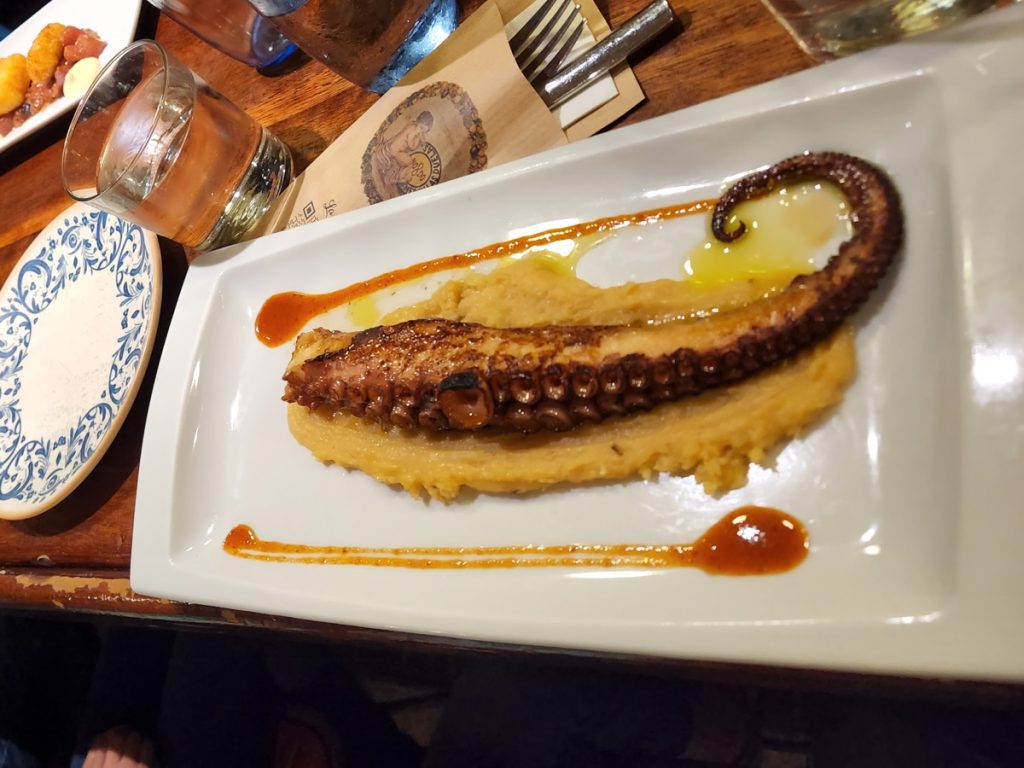
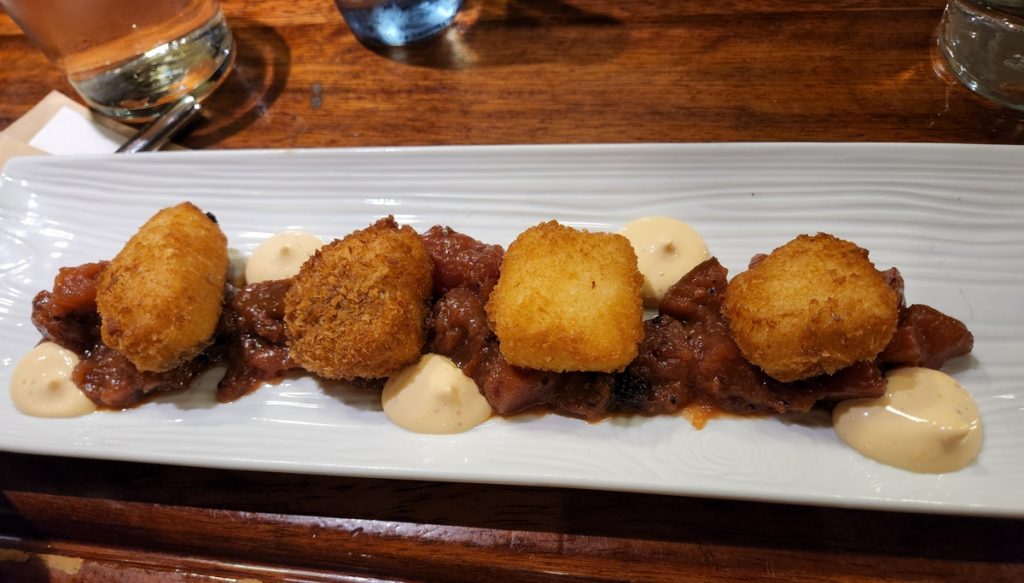

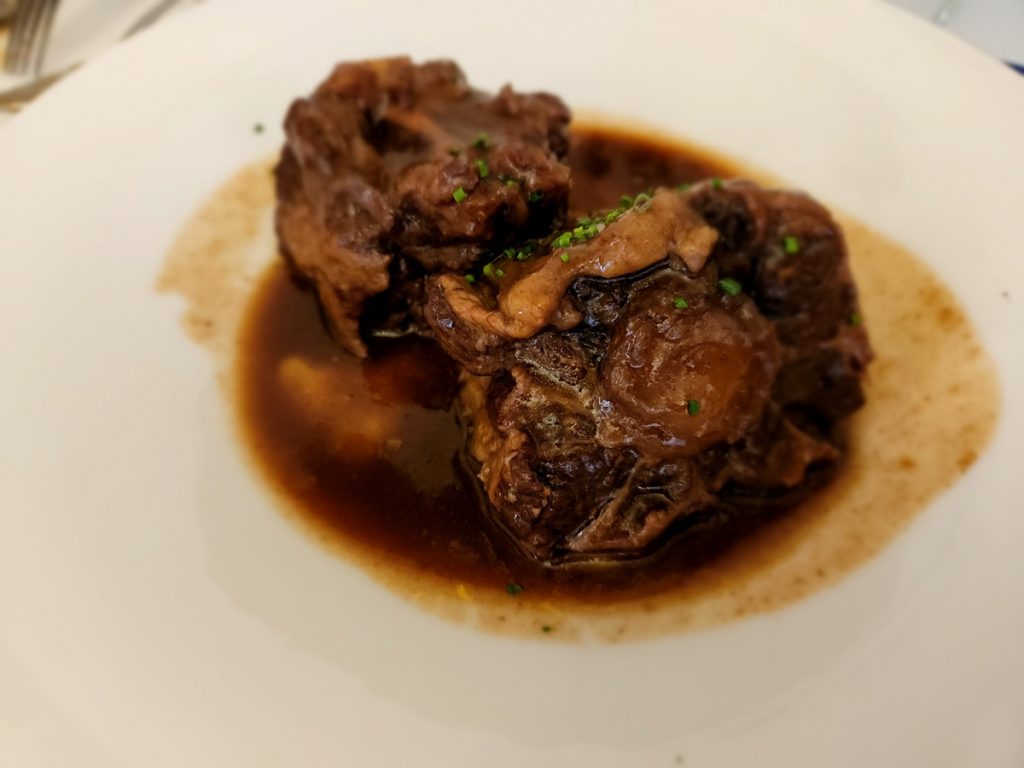
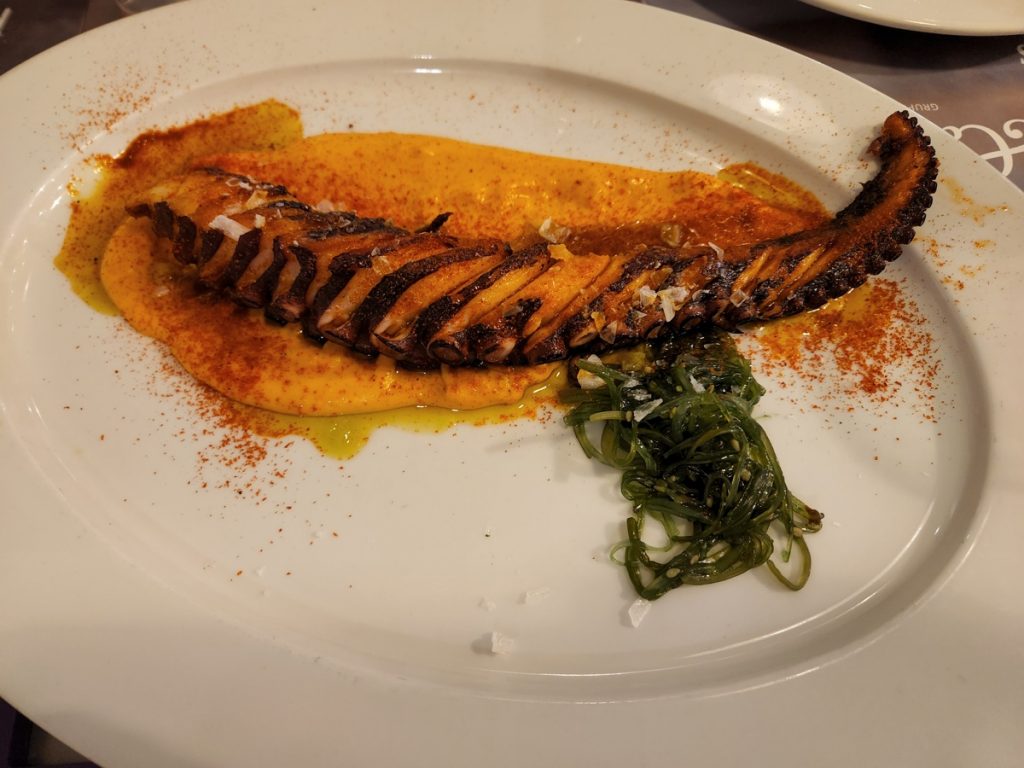
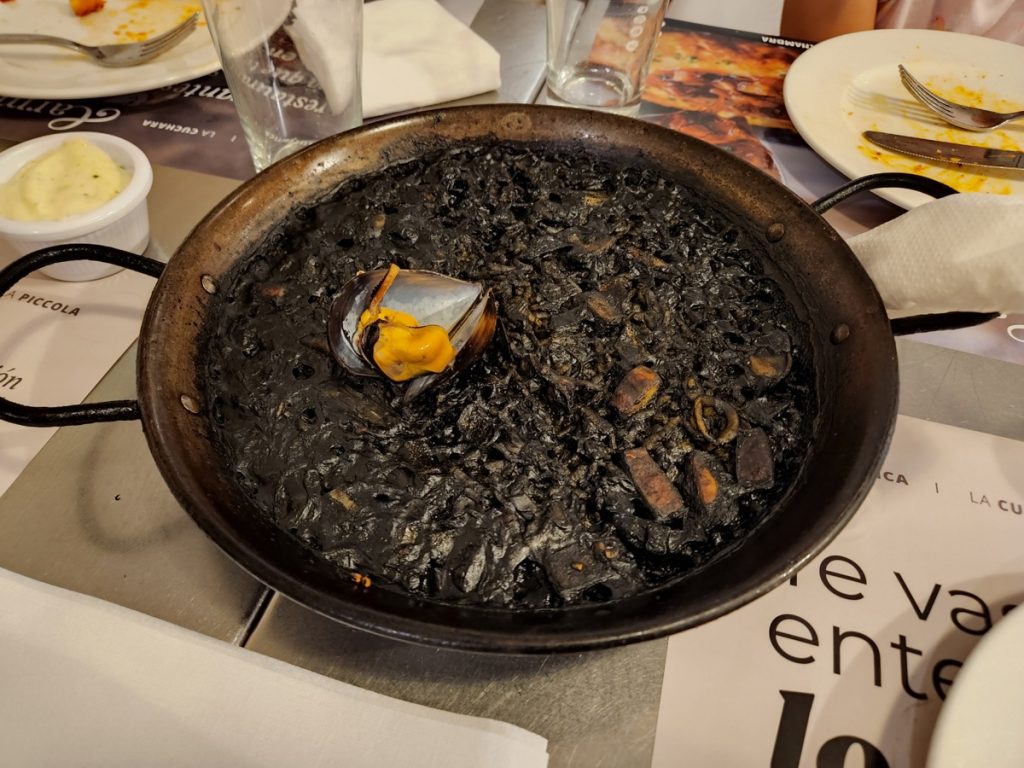
No Comments